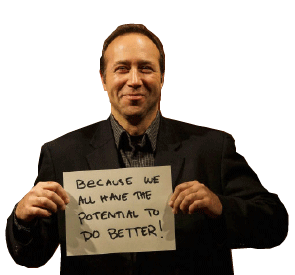Here is the situation. You’ve got some place you’d like to be; a destination yet to be realized. Progress, a big change initiative, the launch of a product or service. Whether you’re the chair, the chief, the executive director, product manager, board member, or some other concerned change maker, you acknowledge you’re not going to get everybody to the destination all by yourself. You’ll need other people to get on board and participate.
Here are 5 lessons to master so that you can all reach the desired destination together.
Assuming you all know the destination (that is another article) you’ll be picking up passengers (employees, vendors, partners, members, volunteers, etc.) at various stops. Be mindful that not everyone will be at the same level of awareness. Slow down and help people get on board. The recently boarded are not as familiar. Take time to show them around. You want to avoid cognitive overload, the proverbial drinking from the firehouse, where little is retained. Provide people with communication tools that allow them to slowly get immersed. See the related blog post about transfer and absorption value as key to better storytelling.
- Maintain Smooth
As you journey together toward your destination, pace and rhythm are key. You don’t want passengers to get thrown off as you approach a corner too fast. You also don’t want a sputtering, inefficient engine. Emulate the smoothness of your washing machine’s spin cycle. In your organization you can establish operating mechanisms to keep things running more smoothly. Like the garbage service or doing laundry at home, operating mechanisms create a regular cycle to keep things from piling up or from being neglected. You’ll retain more passengers on your journey if you avoid abrupt changes, extremes, and neglect. Even a comprehensive strategy pivot can be smooth when thoughtfully handled.
 Keep Synchronized
Keep Synchronized
Some people will want to go faster. Others will think the journey is far too slow. Listen to both concerns. Consider ideas can come from anywhere, even the newest passenger. Inviting others to share ideas could shift your perspective for the better. Create a space for that conversation to happen. I call this the playground and it represents the idea zone. Read more about the 3 psychological zones in Ch 12. Remember, ideas are not judged in the playground and not all ideas will advance. But, it is still important for people to have a voice, be respected, listened to, and for their ideas to be considered at an appropriate time. Establish an operating mechanism to screen and advance ideas.
 Don’t Ignore Conditions
Don’t Ignore Conditions
There may be cattle on the tracks, a bridge out ahead or another hazard. Trains encounter changing conditions and hazards; so does your organization. Establishing “sensors in the ground” (see Ch 8) can serve as your early warning system, like seismometers that detect shifts in the earth’s tectonic plates. The journey will be smoother for all aboard if you confront reality and don’t pretend your passengers will be unaffected.
 Be Mindful of the Audience
Be Mindful of the Audience
All passengers are not created equally. And, not all of the stakeholders to your organization are either. The women in car number 27 might need a little extra assistance. Same with employee X or customer Y or supplier Z. When we create average experiences for everybody we are destined to be supplanted by somebody more thoughtful to individuals needs and context. Case in point, would you like to wait for a yellow cab or message Uber?
Whether your train of progress is literal or figurative you can go further and reach your destination if you pay attention to these 5 lessons for implementing change. Ignore them and you may might find yourself navigating the journey alone or more likely stuck in a train that never leaves the station.
about the author
Gregory Olson’s latest book is L’ impossi preneurs: A Hopeful Journey Through Tomorrow, a light-hearted and deadly serious book about a brighter future where we live more meaningful lives, governments invest in people and sustainable progress, and technology serves humans. Greg also authored The Experience Design Blueprint, a book about designing better experiences and then making them come true.
Chapters in The Experience Design Blueprint that especially pertain to this post include:
- Chapter 7: Improving the Journey
- Chapter 8: The Promise Delivery Systems
- Chapter 12: The Three Psychological Zones
See a book summary. Read the book reviews on Amazon. Read The Experience Design Blueprint on Kindle or any device using the free Kindle Reader application or read the full color print edition.
 Gregory Olson founded strategy and design firm Delightability, LLC. with the belief that if you delight customers then success will follow. He believes that we all have the potential to do better, as individuals, organizations, and communities, but sometimes we need a little help. Gregory also serves as a volunteer board member for Oikocredit Northwest, a support association for social and impact investor, Oikocredit International.
Gregory Olson founded strategy and design firm Delightability, LLC. with the belief that if you delight customers then success will follow. He believes that we all have the potential to do better, as individuals, organizations, and communities, but sometimes we need a little help. Gregory also serves as a volunteer board member for Oikocredit Northwest, a support association for social and impact investor, Oikocredit International.








 It turns out this brain behavior is self preserving. Imagine that we didn’t complete patterns and we had to slow down and think about every single l e t t e r that we typed or r e a d. Imagine that we had to re-learn how to walk each day and to tie our shoes and even how to put those shoes on. Or, that we had to consult our mental checklist for everything we came across to assess its potential threat. Of course everyday life would become daunting with the sheer volume of things we encounter and decisions we face as we go about living, working, and recreating.
It turns out this brain behavior is self preserving. Imagine that we didn’t complete patterns and we had to slow down and think about every single l e t t e r that we typed or r e a d. Imagine that we had to re-learn how to walk each day and to tie our shoes and even how to put those shoes on. Or, that we had to consult our mental checklist for everything we came across to assess its potential threat. Of course everyday life would become daunting with the sheer volume of things we encounter and decisions we face as we go about living, working, and recreating. Think of how long it takes you to accept the new. Think of your struggle with and opposition to new ideas and initiatives. This same pattern making behavior your brain habitually engages in every day is also the reason why you drink the same coffee, listen to the same radio station, visit the same stores, wear the same brand shoes, and everything else that forms your consumer habits.
Think of how long it takes you to accept the new. Think of your struggle with and opposition to new ideas and initiatives. This same pattern making behavior your brain habitually engages in every day is also the reason why you drink the same coffee, listen to the same radio station, visit the same stores, wear the same brand shoes, and everything else that forms your consumer habits.










 Gregory Olson founded strategy and design firm Delightability, LLC. with the belief that if you delight customers then success will follow. He believes that we all have the potential to do better, as individuals, organizations, and communities, but sometimes we need a little help. Gregory also serves as a volunteer board member for
Gregory Olson founded strategy and design firm Delightability, LLC. with the belief that if you delight customers then success will follow. He believes that we all have the potential to do better, as individuals, organizations, and communities, but sometimes we need a little help. Gregory also serves as a volunteer board member for 



